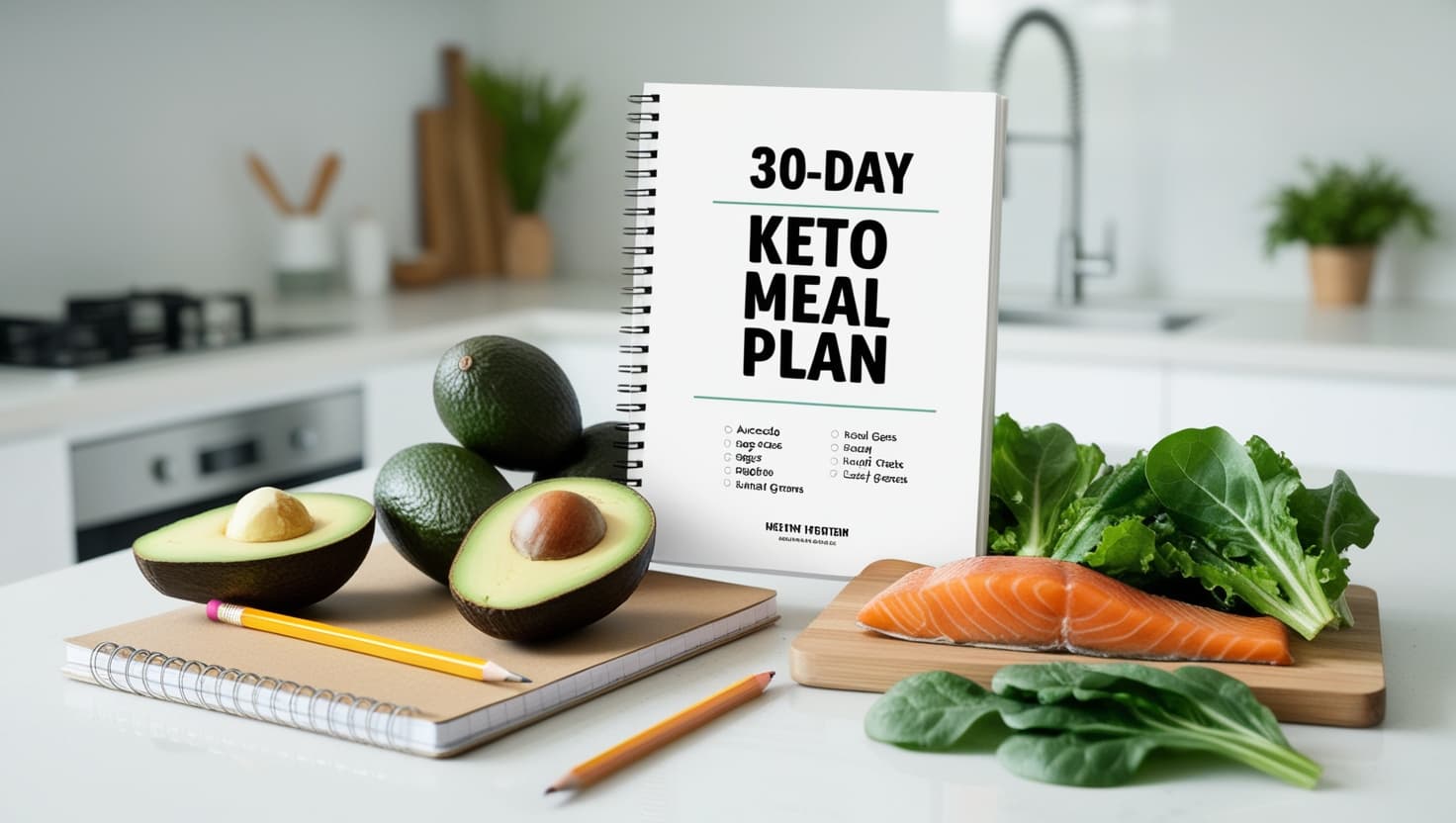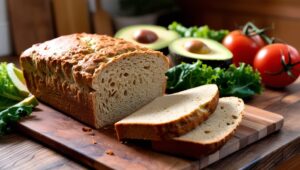Table of Contents
ToggleHave you ever felt like no matter how hard you try, you can’t shed those extra pounds? You’ve scoured the internet, tried various diets, but nothing seems to stick. Enter the 30-day keto meal plan—a diet that promises rapid fat loss, more energy, and less hunger. But does this popular meal plan live up to the hype? Can it really help you lose weight without feeling deprived?
In this in-depth review, we’ll explore the ins and outs of the 30-day keto meal plan, its potential benefits, drawbacks, and how it stacks up against other diets. By the end of this article, you’ll have all the information you need to decide if the 30-day keto meal plan is right for you.
What Is the 30-Day Keto Meal Plan?
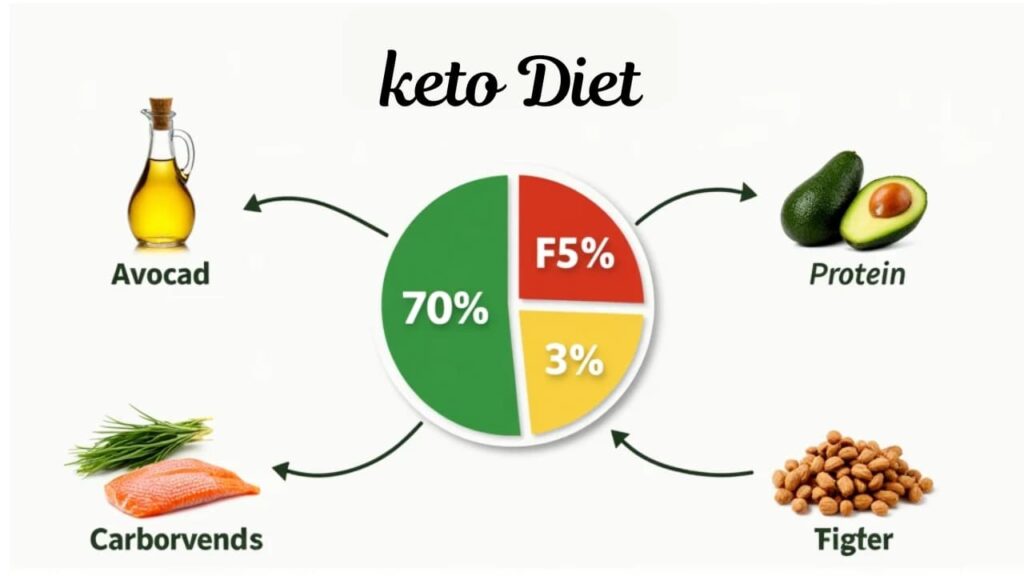
The 30-day keto meal plan is a structured, low-carb, high-fat diet designed to help you enter a metabolic state called ketosis. In ketosis, your body burns fat for fuel instead of carbohydrates, which can lead to significant weight loss, especially in the first month.
The basic premise of keto is to drastically reduce your carb intake (usually around 20-50 grams of carbs per day) and increase your fat consumption. By doing so, your body switches from burning glucose (from carbs) to burning fat, both from your diet and stored fat reserves.
H2: How Does the Keto Diet Work?
The key to the keto diet is maintaining low levels of carbohydrates so your body is forced to use fat as its primary energy source. This shift happens when the liver converts fats into ketones, which the body and brain use for energy.
Unlike other low-calorie diets, keto focuses on macronutrient ratios rather than calorie restriction. The typical macronutrient breakdown for a ketogenic diet looks like this:
- Fat: 70-75% of your daily calories
- Protein: 20-25% of your daily calories
- Carbohydrates: 5-10% of your daily calories
The 30-day keto meal plan provides a roadmap for sticking to these macros, making it easier to reach ketosis and stay there.
Benefits of the 30-Day Keto Meal Plan
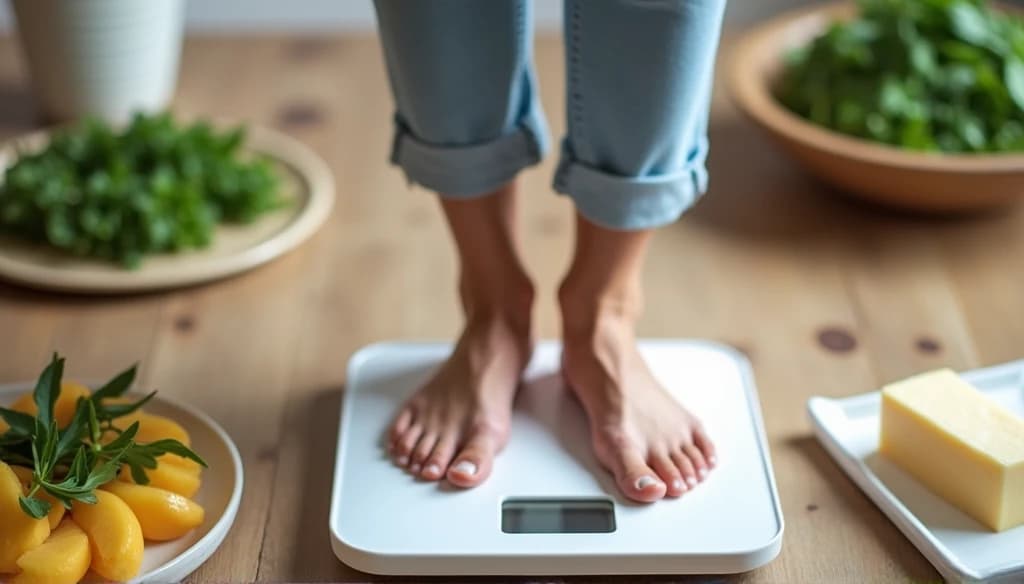
1. Rapid Weight Loss
One of the biggest draws of the 30-day keto meal plan is its ability to help you lose weight quickly. During the first week of keto, many people experience significant water weight loss, followed by steady fat loss. In ketosis, the body becomes highly efficient at burning fat, which can lead to faster weight loss compared to other diets.
2. Reduced Hunger and Cravings
Unlike calorie-restricted diets, keto keeps you feeling full and satisfied thanks to its high-fat content. Fats like avocado, cheese, and nuts are not only delicious but also help suppress hunger and control cravings. This can make the diet easier to stick to, reducing the likelihood of binge eating or snacking on unhealthy foods.
3. Improved Mental Clarity and Focus
Many people report improved brain function and mental clarity while on keto. Ketones are a more stable energy source for the brain compared to glucose, which can lead to fewer energy crashes and enhanced cognitive performance.
4. Enhanced Fat Burning
The keto diet trains your body to burn fat for fuel, which is ideal for anyone looking to lose weight. By entering ketosis, your body taps into its fat reserves, making it easier to burn stubborn body fat around the midsection, thighs, and arms.
5. Steady Energy Levels
Unlike diets high in carbohydrates, which can cause blood sugar spikes and crashes, keto provides a more stable source of energy. Once you’re in ketosis, fat becomes a consistent energy source, leading to fewer cravings, less fatigue, and more sustained energy throughout the day.
Drawbacks of the 30-Day Keto Meal Plan

While the 30-day keto meal plan offers many benefits, it’s not without its challenges. Here are some potential drawbacks to keep in mind:
1. Keto Flu
In the first few days of starting keto, many people experience symptoms known as the keto flu. These include headaches, fatigue, irritability, and nausea. This happens as your body adjusts to burning fat instead of carbs. While the symptoms typically subside within a week, they can be tough to manage without proper hydration and electrolytes.
2. Restrictive Food Choices
The keto diet is highly restrictive when it comes to carbs, which means saying goodbye to bread, pasta, rice, and many fruits. For some people, this can make the diet difficult to stick with long-term, especially if they’re used to eating a carb-heavy diet.
3. Difficulty Dining Out
Following a 30-day keto meal plan can be challenging when dining out. Many restaurant meals are high in carbs, and it can be difficult to find keto-friendly options without making significant modifications to your order. This can be a dealbreaker for people who don’t want to cook every meal themselves.
4. Potential for Nutrient Deficiency
Because the keto diet eliminates many nutrient-rich foods like fruits, legumes, and whole grains, there’s a risk of developing nutrient deficiencies, particularly in fiber, vitamins C and D, and potassium. It’s important to plan your meals carefully and consider taking supplements to fill any nutritional gaps.
How to Make the 30-Day Keto Meal Plan Work for You
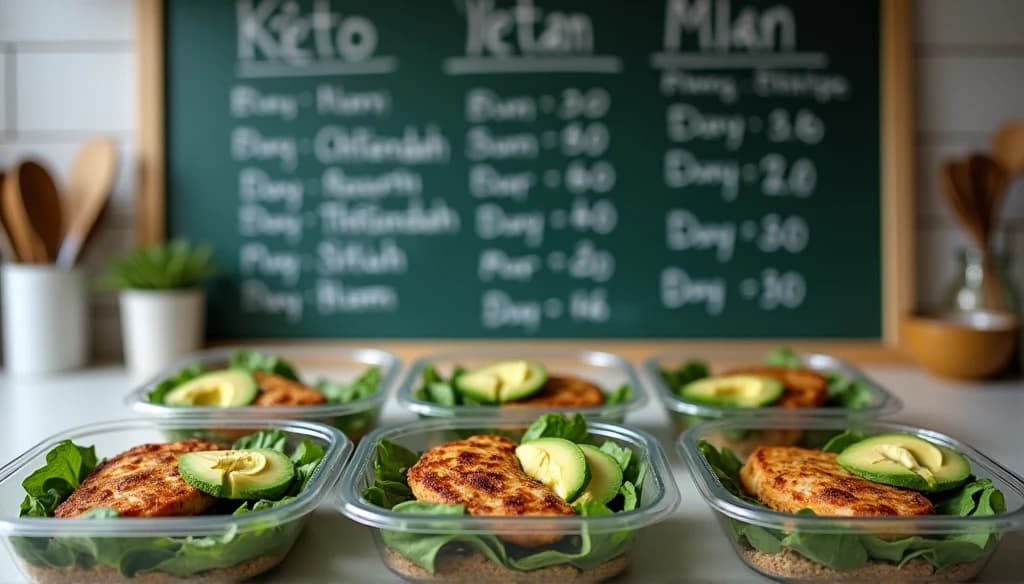
1. Plan Your Meals in Advance
Meal planning is crucial to your success on the 30-day keto meal plan. Without a clear plan, it’s easy to accidentally consume too many carbs or not enough fat. By planning your meals in advance, you’ll have a better chance of staying on track and reaching ketosis faster.
2. Track Your Macros
To ensure you’re staying within the correct macronutrient ratios, it’s essential to track your food intake. You can use apps like MyFitnessPal or Cronometer to log your meals and monitor your daily carb, fat, and protein intake.
3. Stay Hydrated and Replenish Electrolytes
When you reduce your carb intake, your body releases more water and electrolytes, which can lead to dehydration and the dreaded keto flu. Make sure to drink plenty of water and replenish lost electrolytes by consuming foods rich in sodium, potassium, and magnesium, or by taking supplements.
4. Incorporate Keto-Friendly Snacks
Having keto-friendly snacks on hand can help you stay on track, especially when hunger strikes between meals. Some great options include:
- Cheese sticks
- Hard-boiled eggs
- Nuts (almonds, walnuts, macadamia nuts)
- Avocado
- Keto fat bombs
5. Be Patient
The first few days on keto can be the toughest, especially as your body transitions from burning carbs to burning fat. It’s important to be patient and give your body time to adjust. After the first week, you’ll likely start to see results in both your energy levels and weight loss.
Comparing the 30-Day Keto Meal Plan to Other Diets
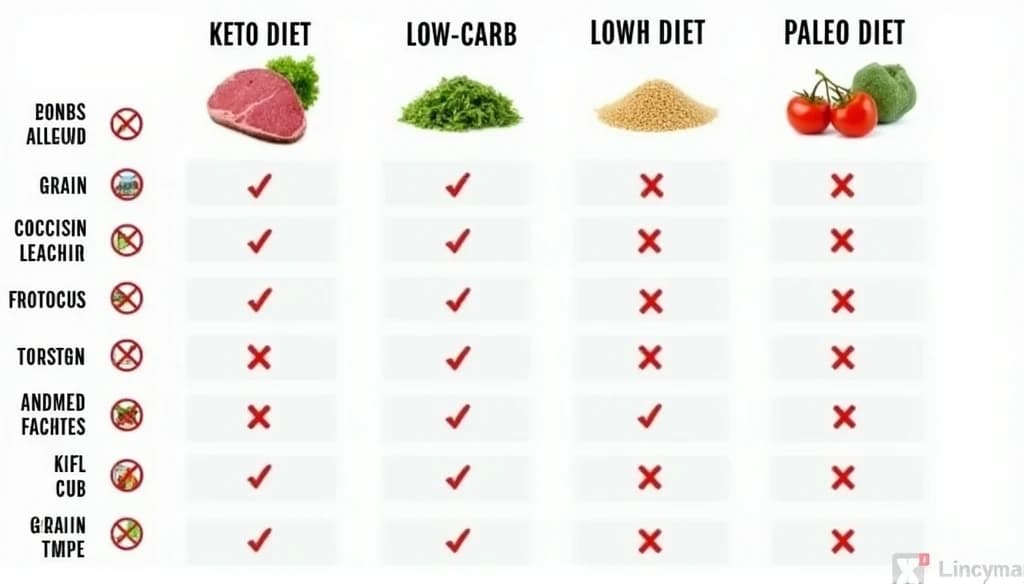
Keto vs. Low-Carb Diets
While both the keto diet and low-carb diets significantly reduce carbohydrate intake, keto is more restrictive. A typical low-carb diet allows for around 100-150 grams of carbs per day, whereas keto limits carbs to about 20-50 grams. This makes keto more effective for entering ketosis and burning fat, but also more difficult to follow long-term.
Keto vs. Paleo Diet
The Paleo diet focuses on eating whole, unprocessed foods like lean meats, vegetables, fruits, and nuts, while eliminating grains, legumes, and processed foods. While both diets promote weight loss and health benefits, the Paleo diet is more flexible with carbs, allowing for more fruits and starchy vegetables than keto. Keto, on the other hand, is more focused on achieving ketosis through low carb intake and high fat consumption.
Keto vs. Intermittent Fasting
Many people combine intermittent fasting with keto to accelerate fat loss. Intermittent fasting involves alternating periods of eating and fasting, which can help boost ketone production and fat burning. While intermittent fasting can be done on any diet, it pairs well with keto because both approaches encourage the body to burn fat for fuel.
Ready to Transform Your Body in Just 30 Days?
Imagine feeling lighter, more energized, and confident—all while enjoying delicious, satisfying meals. The 30-Day Keto Meal Plan is your ultimate guide to rapid weight loss and long-term health. Whether you’re new to keto or looking for a structured plan to help you stay on track, we’ve got you covered.
Why wait? Join thousands of others who have already transformed their lives with keto!
Subscribe Today and Get:
- A step-by-step 30-day keto meal plan tailored for fat loss
- Delicious, easy-to-follow recipes that keep you full and satisfied
- Grocery lists and meal prep tips that make keto simple and stress-free
- Access to exclusive keto guides, dessert recipes, and more!
👉 Click Here to subscribe and start your 30-day keto journey.
Start Your Keto Journey Now
Don’t wait—your transformation starts today!
Conclusion: Is the 30-Day Keto Meal Plan Worth It?
The 30-day keto meal plan is an effective way to jump-start your weight loss journey, especially if you’re looking for rapid results. It offers numerous benefits, including faster fat burning, reduced hunger, and improved mental clarity. However, the diet does come with its challenges, such as the keto flu and restrictive food choices.
If you’re willing to commit to the plan and make the necessary adjustments, the 30-day keto meal plan could be the solution you’ve been searching for. Whether you’re a keto newbie or a seasoned dieter, this meal plan provides a clear path to achieving your weight loss goals and improving your overall health.
So, is the 30-day keto meal plan worth it? For many, the answer is a resounding yes!
Frequently Asked Questions (FAQs)
How much weight can I expect to lose on a 30-day keto meal plan?
Weight loss varies from person to person, but many people lose between 10-20 pounds in the first 30 days. Factors like starting weight, activity level, and adherence to the diet will affect your total weight loss.
Is the 30-day keto meal plan safe for everyone?
While the keto diet is safe for most people, it may not be suitable for individuals with certain health conditions such as diabetes, kidney disease, or those who are pregnant. It’s always best to consult with a doctor before starting any new diet plan.
What can I eat on a keto meal plan?
On a keto meal plan, you’ll focus on low-carb, high-fat foods like meat, fish, eggs, cheese, low-carb vegetables, and healthy fats like olive oil and avocado. You’ll avoid high-carb foods like bread, pasta, rice, and sugary snacks.
Can I exercise while on keto?
Yes, you can exercise while on keto, and it’s encouraged! However, you may experience a dip in performance during the first few weeks as your body adjusts to using fat for fuel. After this adaptation phase, many people report improved endurance and fat-burning ability during exercise.
How long does it take to enter ketosis?
Most people enter ketosis within 2-4 days of starting a strict low-carb, high-fat diet. However, the time it takes can vary depending on factors like your metabolism, activity level, and how many carbs you’ve been consuming.

